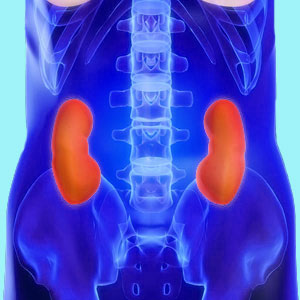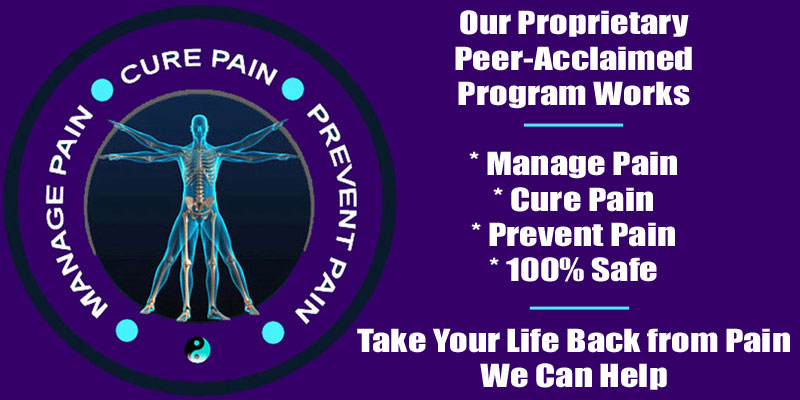
The diagnosis of lower back pain can be a misguided process that targets incidental structural issues, rather than identifying the actual source of pain. In fact, after being the world’s leading source of dorsalgia education and patient advocacy for more than a decade, we can say for sure that misdiagnosis of low back pain is the single most prevalent and horrific problem in the back and neck treatment industry.
Diagnosis is the step of the treatment process where the most problems can occur. If something does go wrong, every step performed thereafter will be misdirected and incorrect. We are amazed how few patients choose to pursue a second opinion on their diagnosis before undergoing treatment or even surgery. It is even more astounding that some patients will move from failed treatment to failed treatment and complain about doctor after doctor, citing how nothing has worked for them or provided any relief. However, it never even occurs to these patients that maybe it is their diagnosis that was faulty all along. No, they cling to the diagnosis like a safety blanket and hold on for dear life, reporting that they have “proof” of its accuracy because they saw some diagnostic imaging study that “verified” the condition as the source of pain. These people have a lot to learn!
This most important resource section focuses on the diagnosis and misdiagnosis of lower back pain. We will investigate the problems inherent to the diagnostic processes and provide food for thought that all patients should understand before seeking diagnostic evaluation of any lumbar dorsalgia condition.
Lower Back Pain Diagnostic Process
Typically, patients will ask their primary care doctor for a referral to a specialist when it comes to diagnosing low back pain. Sometimes, they will make a selection themselves, particularly if they already have experience with a specialist who can fulfill the role of diagnostician. Rarely, a general practitioner will attempt the diagnostic process themselves, but this is almost unheard of in developed medical sectors.
A comprehensive diagnostic process should include a detailed patient interview that inquires about the symptoms in terms of location, severity, changes that occur and their consequences. A complete physical exam should be performed and neurological testing should be part of this examination, when indicated (virtually always). Blood tests and other general health screening should be completed to rule out or confirm the involvement of diseases or systemic processes in the painful expression.
The diagnostician should attempt to get a feel for the patient’s personality type and gauge the probability for mindbody influence on the pain syndrome.
Diagnostic imaging should be performed, with MRI testing usually being the most enlightened choice. The diagnostic images should be carefully examined by an objective radiologist and clues for any structural causes should be noted for the diagnostician to consider. The diagnostician should review the imaging evidence and correlate symptoms to any suspected spinal issue located.
Finally, if a suspected diagnosis is established, the patient should be presented with a non-nocebo generating objective view of it, as well as a choice of various treatment options, regardless of whether all are offered by that specific doctor or not. This is an ideal diagnostic process. In our experience, this never occurs…
In short form, what we observe in the typical diagnostic evaluation is a 1 minute interview about pain and location, followed by imaging and a diagnosis rendered subjectively by the reading radiologist, most often of a condition that does not correlate symptomatically to the patient’s expressions. Furthermore, there is often no evidence of pathology in the structural abnormality implicated as the source of pain. Finally, only one or two therapy choices are offered and these will reflect the services offered by the doctor and will certainly not provide the patient the chance to seek care elsewhere, even if other options will better suit the patient’s needs and general health. This is the reality of lower back pain diagnosis and it is surely a failed system.
Diagnosis of Lower Back Pain Verdicts
The following essays each detail a specific aspect of the diagnostic process for lower back pain. As each new article is published, it will be added to the section below:
Low back pain misdiagnosis is the single greatest obstacle facing most lumbar dorsalgia patients. If there is any doubt about the full scope of this problem, we suggest that you reread this article until it is crystal clear.
Lumbar spine MRI is the best type of imaging study for most patients and most conditions. Unfortunately, the test is expensive and time-consuming.
Lumbar spine x-ray can only detail the skeletal system, but is better than nothing. X-rays might provide fantastic diagnostic evidence for some conditions, but virtually no clues for others.
Please, always seek a second opinion on lower back pain before seeking treatment. In fact, a third opinion is still advised, even if you have to pay out of pocket. In the long run, you will be glad that you did!
Lumbar discogram is a specific and painful test to help diagnose herniated discs as the source of pain. This test is problematic and often causes more trouble than it is worth.
EMG for low back pain also provides nerve information on lumbar back pain problems.
Have you been victimized by the straight leg raising test scam? We cringe when we see this ridiculous evaluation used to “diagnose” lumbar herniated discs. What nonsense!
Lumbar spine specialists and lower back pain specialists provide targeted diagnostic and treatment services. However, some experts only specialize in making themselves lots of money, often at patients’ expense. Be wary of choosing a doctor without learning more about them first.
Have you seen the lower back pain “blame game” in action? We observe it every day in clinical medicine. It often involves a silly plastic model of the spine and some far-fetched, scientifically implausible theories of pain.
Idiopathic low back pain is actually a great thing to have. If no direct source of pain can be ascertained, then there is nothing available to treat. Patients who do not receive medical care for low back pain fare much better than those who do, regardless of the type of care rendered or the diagnosis treated!
Hip Spine Syndrome is a growing explanation for regional pain encompassing several related structural changes to the pelvic/lumbar anatomy.
Low back pain surgical consultations can be frightening and some surgeons use this to their advantage to impart a thick nocebo effect that will have virtually any patient on their operating table in days. I was victimized by such tactics and told the offending doctors exactly what I thought of their behavior!
Always get your treating physician to provide a lower back pain prognosis and get every surgeon to put it in writing. If they will not, then they are not very sure of the facts of your case and probably not certain that their recommendations are even correct.
Diagnosis of Lower Back Pain Mistakes
Misdiagnosis is epidemic in the number of patients affected, as well as the types of spinal “problems” that are theorized to be sources of pain without any logical evidence. If you have tried to find relief for lower back pain, but have failed at every turn, please consider the obvious answer why. In virtually all cases, the diagnosis is unsound and has led you on a fool’s errand. It is time to stop playing the fool role and take responsibility for your health. Get involved. Learn why the diagnosis might be incorrect. All the information you need is readily available. (It is all right here on this website, in fact…)
We hope that this critical article has awoken something in you that you already know is true. It is amazing how many patients contact us after reading essays such as this one, reporting how we literally saved their life once a real diagnosis of the true causative problem was finally rendered. This never would have been possible had they continued on the mistaken path. There is always a fork in the road and you must choose to turn off in the right direction instead of forging ahead towards yet another treatment failure due to what might be called a diagnostic catastrophe.
Lower Back Pain > Diagnosis of Lower Back Pain





